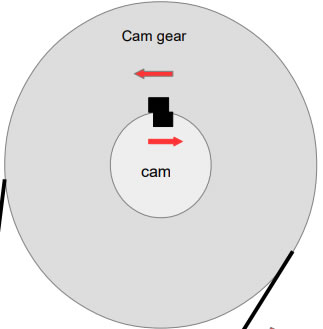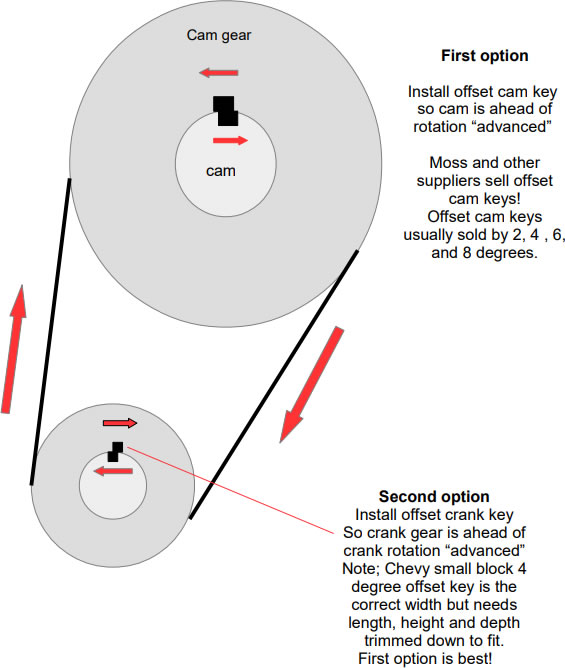Cam Timing for Basic Stock MGA MGB Engines

Over the years I have helped many customers with running problems after they had replaced the timing chain, cam or timing gears. Anyone who ever had an MGA or MGB “B” series engine apart is familiar with the difficulty aligning the timing marks on the cam timing gears.
The proper way to check the cam timing is to use a degree wheel before the engine is assembled and installed in the car. If you’re just replacing the timing cover seal and timing chain, a quick way is to check the cam timing is to check the valve movement to the TDC mark on the crank.
As the exhaust valve is just about to close, the intake valve is just opening. This equal distance is valve overlap.
If you carefully check that both valves are at equal distance, the exhaust valve is just about to close and intake valve just started to open the crank should be at TDC.
If you’re off a tooth the TDC mark will most likely be 10 or more degrees before or after the TDC mark on the crank pulley.
A quick trick before you remove the timing chain and gears is to mark the upper timing gear towards the top of the gear next to an outer chain link and mark the crank gear towards the lower part next to the outer chain link, than count how many outer chain links are between the two marks include the outer link on the gear mark.
This usually assures the timing is where the factory had set the timing before you pulled the timing gears off.
Once I’m confident the timing is correct either by degree the cam timing or by checking the valve overlap “if the engine is in the car”, I often carefully remove the timing gears and chain together as a set and install a 4-degree offset key on the cam. Advancing the cam shifts the torque and power down 1000 RPMs but limits the high RPMs. In other words, if the power range was 2000 to 5500 RPMs with the 4-degree advanced cam the power range will be around 1000 to 4500 RPMs. This can increase the over all performance especially if you have a 5 speed or changed the rear gears for highway speeds and don’t usually run the engine up to the red line.
Another benefit is advancing the cam 4 degrees reduces combustion chamber heat that transfers to the oil cooling the pistons. Reduced oil temperature maintains oil viscosity giving better bearing protection.
Overall advanced cam timing improves cooling, torque, mileage and performance under 4500 RPMs where most of us drive our cars.
Rule of thumb is only advance or retard a cam 4 degrees from straight up cam timing.
Most cam timing before the 1970s is what we call straight up cam timing.
By early 1970s most engines are 4 degrees retarded. These engines can be advanced 4 degrees to straight up cam timing to have the performance of the 1960s and another 4 degrees to be set to what we call 4 degrees advanced for the extra low end performance.
If you’re installing a new cam, check with the manufacturer if it has built in advanced cam timing.
The spec card supplied with the new cam indicates the RPM range and can often be advanced 4 degrees to improve low end performance for your driving habits.
Advance cam with offset cam or crank key
Note; MGA engines are straight up cam timing and can only be moved 4 degrees advanced or retarded.
MGB engines are straight up to 1971. 1972 to 1980 18V engines are 4 degrees retarded and can be moved up to 8 degrees advanced.

Written by Rob Medynski of British Vacuum Unit from Canterbury, New Hampshire, October 7, 2022.

